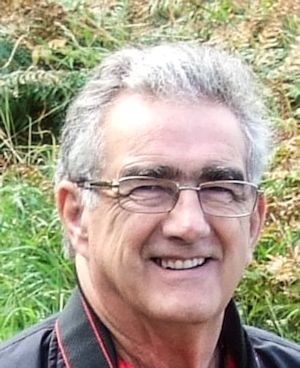The moon starts off just past full phase and just past a shallow lunar eclipse. So, we should expect another eclipse just 14 days later (more on that below). Dec. 2, the moon is only 0.2 degrees north of the cluster M35. By Dec.7, the minor planet Vesta is occulted in the Eastern Hemisphere, only 0.8 degrees away for us in the west.
With the new moon Dec. 14 comes the second eclipse of the season, this time a total solar eclipse beginning in the southern Pacific Ocean, crossing southern South America and on out into the Atlantic. Many intrepid eclipse chasers will be in Santiago or Valparaiso to bask briefly under the moon’s shadow.
A few days later, Dec. 17, Jupiter and Saturn are both three degrees north of our satellite. Neptune shares the sky with the moon Dec. 20, but a telescope is required to see the disk of the blue-green planet. Dec. 23, Mars is three degrees north of the moon and Uranus is slightly further east. Once again, M35 is 0.2 degrees south of the moon Dec. 29, and the moon is full that same evening.
Mercury is not visible this month.
Venus gradually drops lower and lower to the horizon as the month progresses, rounding in its orbit to soon pass behind the sun. The moon passes by Dec. 12.
Mars, while still a prominent evening object, loses much of its glory as the month goes by. It shrinks in apparent size and is only half as bright by month end. The waxing gibbous moon passes by Dec. 23.
Jupiter and Saturn reach conjunction Dec. 21. They have been gradually closing together for months now, culminating in this close approach of 0.1 degree, a relatively rare event. Look for the two gas giants near the western horizon just after sunset. The moon will have passed by Dec. 16.
Uranus is high in the sky at sunset, falling below the western horizon near midnight.
Neptune likewise sets near midnight, offering only a brief window of opportunity for viewing.
The Geminid meteor shower peaks Dec. 14, and a total solar eclipse occurs in the Southern Hemisphere.
The winter solstice is Dec. 21 at 10:02 UT, as the sun reaches its furthest point south and begins its long journey north.
Dec. 22 marks the peak of the Ursid meteor shower at 9 UT.
James Edgar has had an interest in the night sky all his life. He joined The Royal Astronomical Society of Canada in 2000, was national president for two terms, is now the editor of the Observer’s Handbook, and production manager of the bi-monthly RASC Journal. The IAU named asteroid 1995 XC5 “(22421) Jamesedgar” in his honour.



